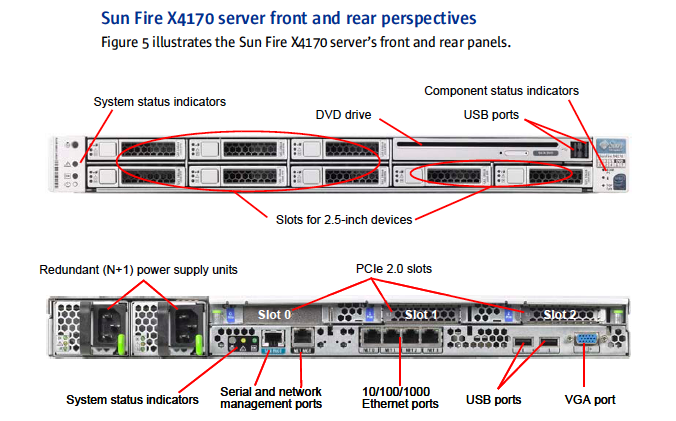I ran across a funny SQL statement recently (funny strange, not funny ha ha – well actually funny ha ha too I guess). It had a first_rows hint like so:
select /*+ FIRST_ROWS (999999999) */
"MANDT" , "OPBEL" , "OPUPW" , "OPUPK" , "OPUPZ" , "BUKRS" , "GSBER" , "BUPLA" , "SEGMENT" ,
"AUGST" , "GPART" , "VTREF" , "VTRE2" , "VKONT" , "ABWBL" , "ABWTP" , "ABWKT" , "APPLK" ,
"HVORG" , "TVORG" , "KOFIZ" , "SPART" , "HKONT", "MWSKZ" , "MWSZKZ" , "XANZA" , "STAKZ" ,
"BLDAT" , "BUDAT" , "OPTXT" , "WAERS" , "FAEDN", "FAEDS" , "VERKZ" , "STUDT" , "SKTPZ" ,
"XMANL" , "KURSF" , "BETRH" , "BETRW" , "BETR2" , "BETR3" , "SKFBT" , "SBETH" , "SBETW" ,
"SBET2" , "SBET3" , "MWSKO" , "MWVKO" , "TXRUL" , "SPZAH" , "PYMET" , "PYBUK" , "PERNR" ,
"GRKEY" , "PERSL" , "XAESP" , "AUGDT" , "AUGBL" , "AUGBD" , "AUGRD" , "AUGWA" , "AUGBT" ,
"AUGBS" , "AUGSK" , "AUGVD" , "AUGOB" , "WHANG" , "WHGRP" , "XEIPH" , "MAHNV" , "MANSP" ,
"XAUGP" , "ABRZU" , "ABRZO" , "FDGRP" , "FDLEV" , "FDZTG", "FDWBT" , "XTAUS" , "AUGRS" ,
"PYGRP" , "PDTYP" , "SPERZ" , "INFOZ" , "TXJCD" , "TXDAT" ,"VBUND" , "KONTT" , "KONTL" ,
"OPSTA" , "BLART" , "EMGPA" , "EMBVT" , "EMADR" , "IKEY" , "EUROU" , "XRAGL" , "ASTKZ" ,
"ASBLG" , "XBLNR" , "INKPS" , "RNDPS" , "QSSKZ" , "QSSEW" , "QSPTP" , "QSSHB" , "QBSHB" ,
"QSZNR" , "RFUPK" , "STRKZ" , "FITPR" , "XPYOR" , "LANDL" , "INTBU", "EMCRD" , "C4EYE" ,
"C4EYP" , "SCTAX" , "STTAX" , "STZAL" , "ORUPZ" , "NEGBU" , "SUBAP" , "PSWSL" , "PSWBT" ,
"PSWTX" , "PSGRP" , "FINRE" , "RDSTA" , "RDSTB" , "DEAKTIV" , "SGRKEY", "SOLLDAT" , "RECPT" ,
"TOCOLLECT" , "EINMALANF" , "VORAUSZAHL" , "APERIODIC" , "ABRABS" , "GRBBP" , "ASMETH" ,
"INT_CROSSREFNO" , "ETHPPM" , "PAYFREQID" , "INVOICING_PARTY" , "PPMST" , "LOGNO" , "APERIODICT" ,
"ADD_REFOBJ" , "ADD_REFOBJID" , "ADD_SERVICE" , "ZZAGENCY" , "ZZ_EXT_REF" , "ZZ_PAY_AGENT" ,
"ZZFUNDSOURCE" , "ZZINSTALLMENT" , "Z_PROD_ID" , "ZZUSERNAME" , "ZZWF_STAT" , "ZZPAYCHANNEL"
FROM "DFKKOP"
WHERE "MANDT" = :A0 -- NDV=1
AND "BUKRS" = :A1 -- NDV=1
AND "AUGST" = :A2 -- NDV=2
AND "FAEDN" < :A3 -- less than today probably all records
AND ( "PYMET" = :A4 OR "PYMET" = :A5 ) -- NDV=8
AND ROWNUM <= :A6; -- less than 1B
Yes - that's a first rows hint with about a billion as the number of rows to optimizer for.
The reason I noticed it is that it runs for 15 hours before getting a Snapshot Too Old error. The attempted solution was to restart it the next day (thinking maybe it will run better the second time I guess). The table has roughly 100M rows. There was no index on PYMET which is unfortunate as the two values requested account for only about 0.15% (not 15%, 0.15%). The optimizer chooses an index on MANDT, BURKRS, AUGST, FAEDN and as you might expect, it doesn't work very well (see the NDV comments I added to the statement).
Funny things:
The First_Rows hint is requesting the Oracle optimizer to return the first billion records as fast as possible (even though there are only 100M rows).
The documentation for the First_Rows hint in 11g looks like this:
The FIRST_ROWS hint instructs Oracle to optimize an individual SQL statement for fast response, choosing the plan that returns the first n rows most efficiently. For integer, specify the number of rows to return.
For example, the optimizer uses the query optimization approach to optimize the following statement for best response time:
SELECT /*+ FIRST_ROWS(10) */ employee_id, last_name, salary, job_id
FROM employees
WHERE department_id = 20;
In this example each department contains many employees. The user wants the first 10 employees of department 20 to be displayed as quickly as possible.
So I can see where the developers might have interpreted this as the ever elusive "Go Fast" hint.
The developers also added "and rownum < 999999999" to the where clause which limits the amount of rows that can be returned. I'm not sure whether they knew it or not, but this clause also has the same affect as the hint. That is to say that the clause causes the optimizer to modify it's calculations as if the first_rows_N hint had been applied. Maybe the developers weren't getting the "go fast" behavior they expected from the hint and after doing some research found that the "rownum <" syntax would basically do the same thing. I'm guessing that's the case because I can't see why they would really want to limit the number of rows coming back, but I'm not sure.
It's a very odd statement because the First_Rows hint tends to push the optimizer towards index usage, and this statement was behaving badly precisely because it was using an index (a full table scan only took about 1 hour). Regardless of what the developers were trying to do, the fact that they used such a big number caused the optimizer to ignore the hint anyway. Since the table only had 100M rows and the parameter was 1B, the hint was ignored (well at least the "First K Rows" modifications to the optimizer calculations were not used). This happens to the "rownum <" induced behavior as well by the way.
Here's a bit of a couple of 10053 trace file showing some details:
Continue reading ‘Funny Developer Tricks – first_rows(999999999)’ »
